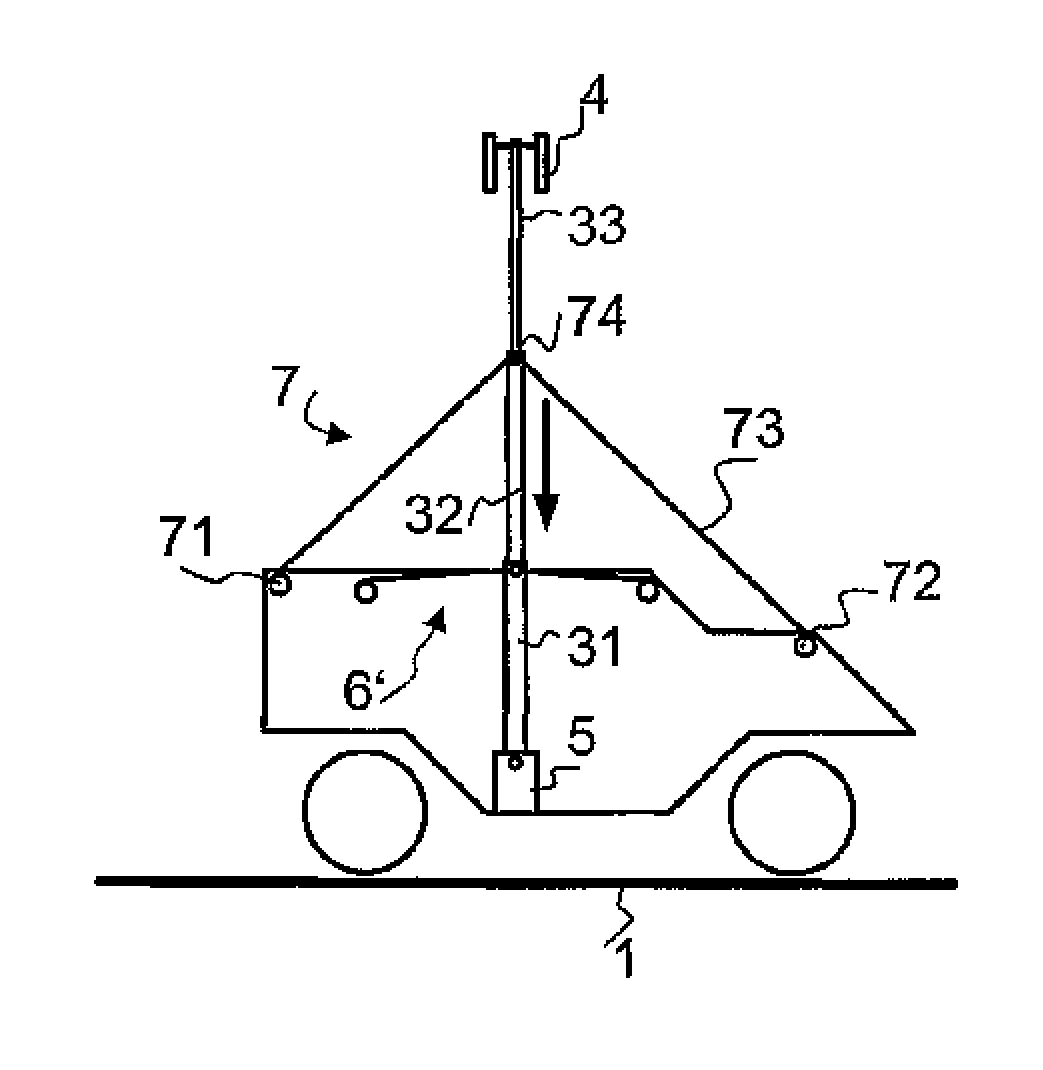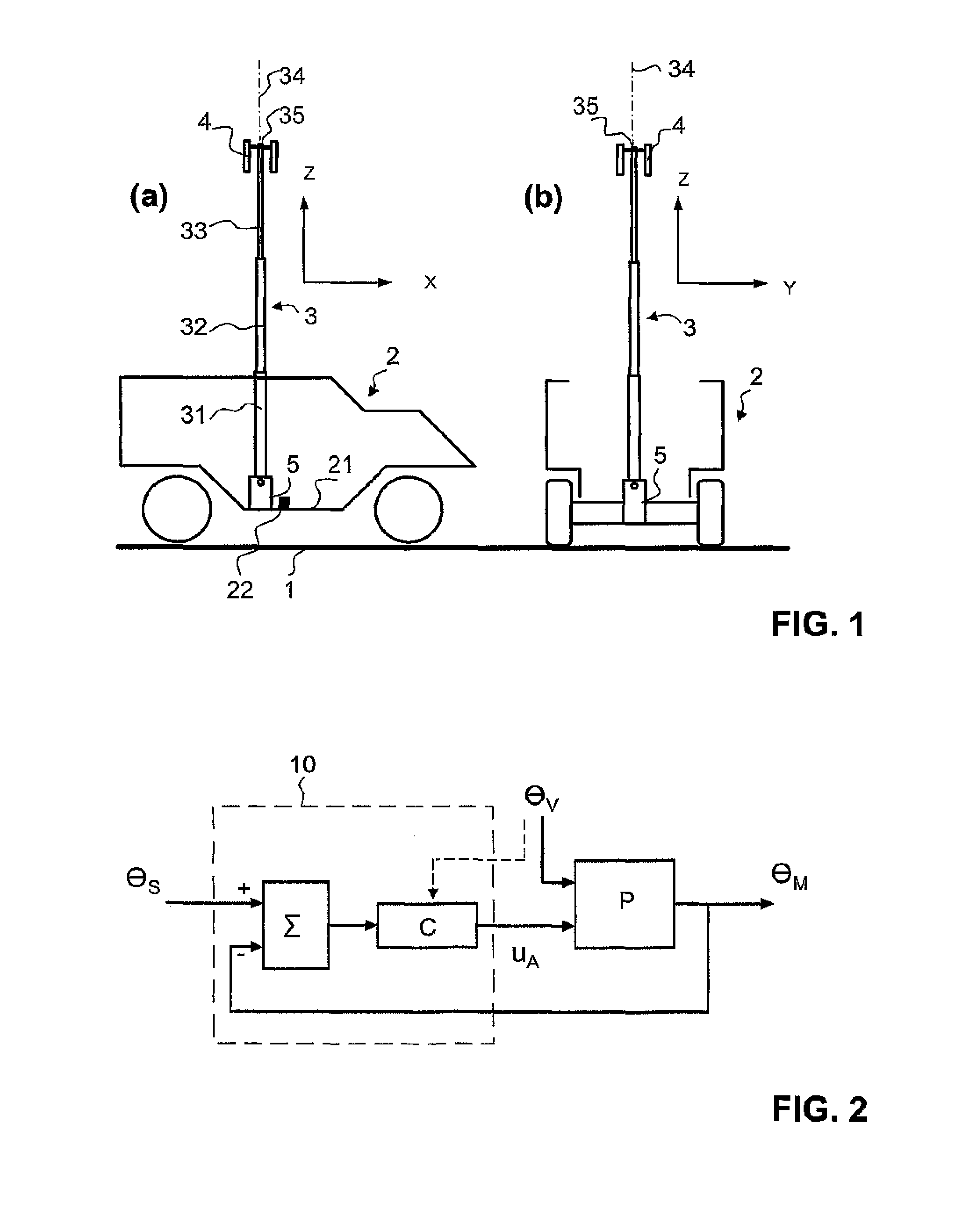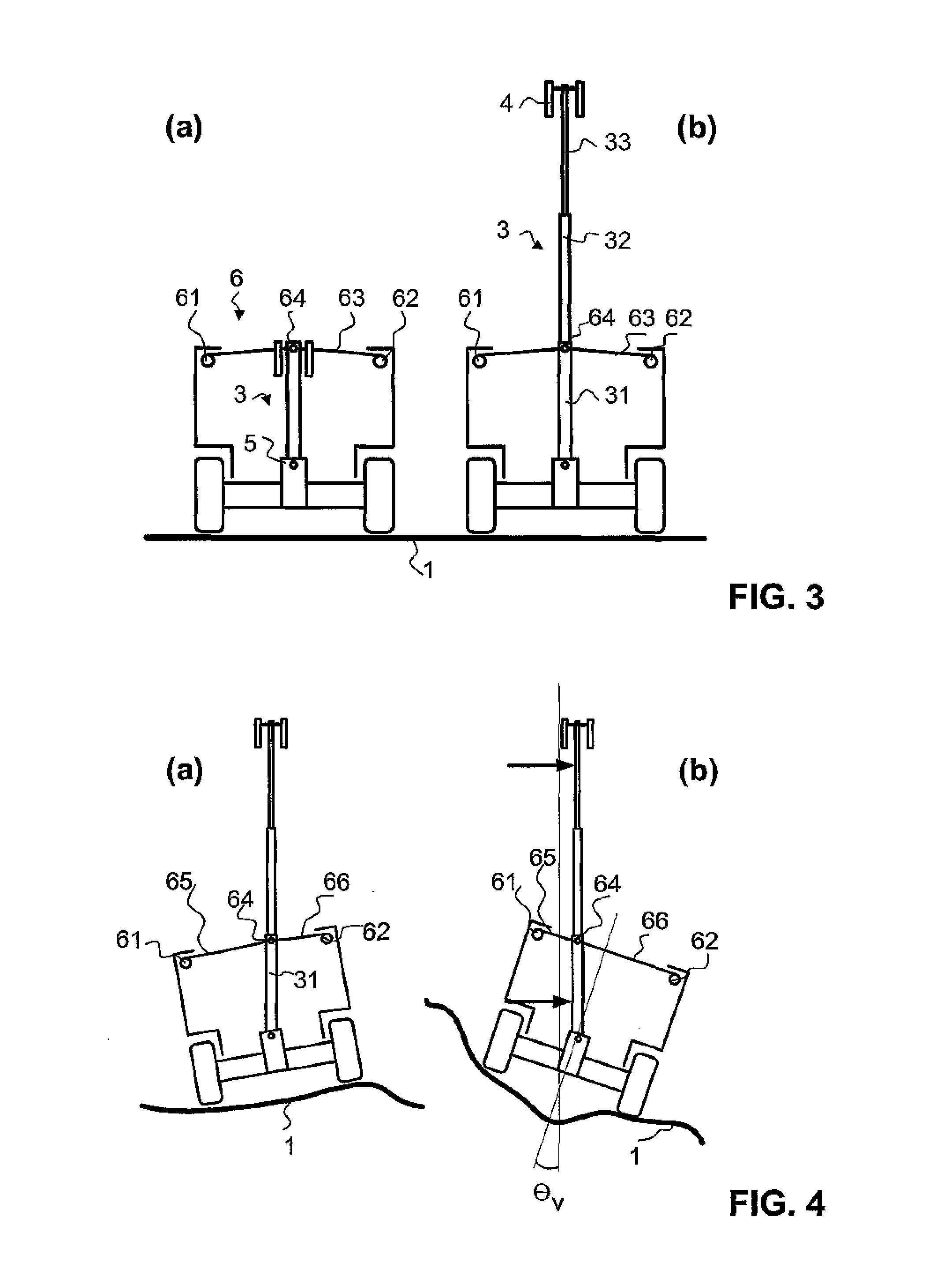Stabilization of a mast for vehicles and ships
a technology for stabilizing masts and ships, applied in the direction of collapsible antennas, process and machine control, instruments, etc., can solve the problems of marine vessels that are not land-based, similar problems also occur in vehicles that are not suitable for stabilizing payloads on telescopic masts, and the arrangement such as these is generally unsuitable for telescopic masts. the device can absorb only limited accelerating forces, and the effect of increasing the stability
- Summary
- Abstract
- Description
- Claims
- Application Information
AI Technical Summary
Benefits of technology
Problems solved by technology
Method used
Image
Examples
Embodiment Construction
[0043]A vehicle 2 with a telescopic mast 3 fitted in it is illustrated schematically in FIG. 1. The fundamental design of a stabilization system according to the invention as well as the indication of directions used in this document will be explained with reference to this Figure.
[0044]With its chassis 21, the vehicle 2 defines a vehicle longitudinal axis, which is referred to as the X direction (FIG. 1(a)). The vehicle lateral axis is referred to as the Y direction (FIG. 1(b)). The vehicle vertical axis, which is referred to as the Z direction, runs at right angles to these two directions. The X, Y and Z directions together form a vehicle-fixed coordinate system.
[0045]The telescopic mast 3 is formed from a plurality of mast segments, in the present example three mast segments 31, 32 and 33. Depending on the design of the telescopic mast, there may, of course, also be more or less mast segments (in practice generally four or more). The mast segments can be moved with respect to one...
PUM
 Login to View More
Login to View More Abstract
Description
Claims
Application Information
 Login to View More
Login to View More - R&D
- Intellectual Property
- Life Sciences
- Materials
- Tech Scout
- Unparalleled Data Quality
- Higher Quality Content
- 60% Fewer Hallucinations
Browse by: Latest US Patents, China's latest patents, Technical Efficacy Thesaurus, Application Domain, Technology Topic, Popular Technical Reports.
© 2025 PatSnap. All rights reserved.Legal|Privacy policy|Modern Slavery Act Transparency Statement|Sitemap|About US| Contact US: help@patsnap.com



